Sydney (Syd) Puddefoot
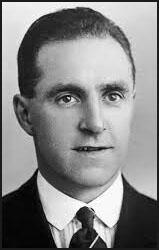
Sydney (Syd) Puddefoot, the son of Harry and Sarah Puddefoot, was born at 18 St Paul's Road (now St Paul's Way), Limehouse, on 17th October 1894. Only five boys out of 13 children reached adulthood. Puddefoot was educated at Park Elementary School in Stratford. The headmaster, Cornelius Beal was a talented football coach and five of his boys played for England. (1)
Beal was a great fan of West Ham United and a significant number of boys from his school went on to play for the club. It has been claimed by John Helliar that Beal had a talent for music and rhymes and wrote special words to the tune of "I'm Forever Blowing Bubbles" and when former Park Elementary School boys "was having a good game the spectators would mention him by name in a parody of the tune." (2)
Syd Puddefoot was a talented footballer and in his final year he scored 147 goals. Cornelius Beal later told a reporter, Puddefoot "was brilliant at his studies - brilliant all round. He was one of the best scholars in the school. I never remember having to spank him, and sometimes one has to administer the cane a little. He was well-liked by everyone - a general favourite". (3)
Cornelius Beal was a good friend of Charlie Paynter, the coach of West Ham United, he told him about his potential to become a top class striker. Paynter passed this information onto Syd King the manager. King watched him play for London Juniors against Surrey Juniors in 1912. (4)
Puddefoot, a centre-forward, joined a team that already included two outstanding strikers in Danny Shea and George Hilsdon. However, he soon won a place in the starting line-up and scored his debut goal against Brighton & Hove Albion on 21st March, 1913.
As John Northcutt and Roy Shoesmith point out in their book, West Ham United: An Illustrated History (1994): "The 19-year-old Syd Puddefoot arrived and he found the net on 13 occasions in his first 11 games... He proved he could find the net when opposed by a quality defence, scoring in both games of a replayed cup-tie against Liverpool."
Puddefoot established an FA Cup goal scoring record for the club on 10th January, 1914, when he scored five times in an 8-1 victory over Chesterfield. That season he scored 16 goals in 20 cup and league games. He also developed a good partnership with Richard Leafe who had been purchased from Sheffield United as a replacement for Danny Shea who had been sold to Blackburn Rovers for a British record transfer fee of £2,000.
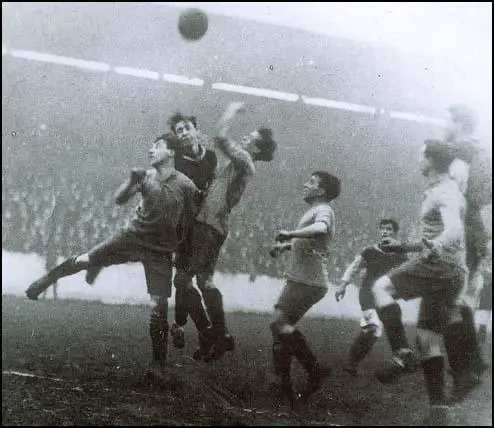
West Ham United finished in 4th place of the Southern League in the 1914-15 season. Puddefoot was top scorer with 18 goals in 35 league games. This included a hat-trick against Exeter City on 2nd January 1915. The local newspaper reported that: "Some 14 minutes elapsed before Puddefoot, who completely outshone every other forward on the field, opened the scoring for his side and ten minutes later he was again successful in finding the net."
The outbreak of the First World War resulted in the disbandment of the Southern League in 1915. Puddefoot, who was not conscripted into the British Army until late into the conflict, made 126 appearances in the London Combination league. In one game against Crystal Palace he scored seven goals, a record for the competition.
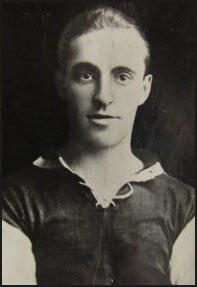
West Ham United finished in 7th place in the 1919-20 season. Puddefoot was once again top scorer with 26 goals in 43 league and cup games. This included hat-tricks against Port Vale, Bury and Nottingham Forest. He continued in good form in the 1920-21 season with 29 goals in 38 league games.
Syd King had managed to build a very good West Ham team that included Jimmy Ruffell, George Kay, Edward Hufton, Jack Tresadern, Vic Watson, Sid Bishop, Richard Leafe, Billy Brown and Jack Young. The team relied heavily on Puddefoot's goals and it was great shock to the fans when King sold him to Falkirk for the British record fee of £5,000 in February 1922. Puddefoot had netted 107 goals in 194 games for the club.
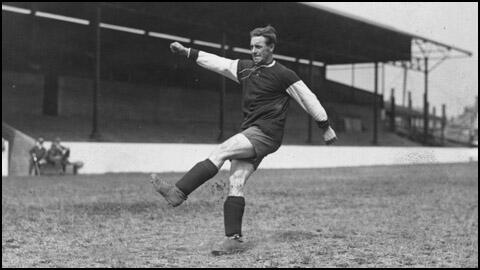
As the authors of the The Essential History of West Ham United (2000) pointed out that his departure "nearly caused a riot among Hammers fans". However, the club blamed Puddefoot in a statement issued after his transfer: "The departure of Syd Puddefoot came as no surprise to those intimately connected with him. It is an old saying that everyone has one chance in life to improve themselves and Syd Puddefoot is doing the right thing for himself in studying his future. We understand that he will be branching out in commercial circles in Falkirk and when his football days are over he will be assured of a nice little competency."
The truth of the matter was that Puddefoot was very reluctant to move to Scotland to play for Falkirk. However, at this time footballers had little control over these matters. At the time of his departure, it looked like West Ham United would win promotion to the First Division. However, without their top goalscorer, the club lost five of their last seven games and finished in 4th place.
Puddefoot was unable to recapture the form he showed at West Ham. He later complained that his Scottish teammates refused to pass to him in games. However, he still managed to score 45 goals for the club.
In February 1925, Blackburn Rovers purchased Puddefoot for a fee of £4,000. As Mike Jackman argued in his book, Blackburn Rovers (2006): "Although aged 30, Puddefoot, who had previously played with West Ham United, was the type of gifted playmaker that the club desperately needed, and following his arrival there was an immediate upturn in results... Puddefoot remained one of the most gifted footballers of his era. His vision and passing ability made him the supreme play-maker, the man who made the bullets for others to fire."
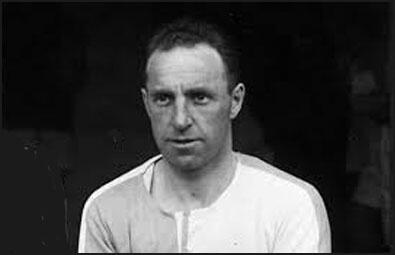
Puddefoot won his first international cap for England against Northern Ireland on 25th October 1925. The game ended in a 0-0 draw. Puddefoot also failed to score in his second game for England against Scotland the following year. His former team-mate Jimmy Ruffell, also played in this game.
Blackburn Rovers had a good FA Cup run in the 1927-28 season. They beat Newcastle United (4-1), Exeter City (3-1), Port Vale (2-1), Manchester United (2-0), Arsenal (1-0) to reach the final against Huddersfield Town at Wembley Stadium.
Huddersfield were hot favourites to win the final. However, in the first minute Jack Roscamp received a pass from Syd Puddefoot. He chipped the ball over the head of Ned Barkas. Billy Mercer, the Huddersfield goalkeeper, attempted to catch the ball. Roscamp collided with Mercer and the ball slipped out of his grasp and trickled into the empty net. Tom McLean added a second after 22 minutes. Alex Jackson got one back for Huddersfield but Roscamp scored his second and Blackburn's third in the 85 minute to give the underdogs a well-deserved victory.
At the age of 37 Puddefoot returned to West Ham United in a vain attempt to prevent West Ham from being relegated from the First Division (1931-32). He retired in 1933 having scored 146 goals in 375 Football League games.
Puddefoot became the coach of Turkish club Fenerbahçe. The following year, he moved to Galatasaray, but as Tony Hogg pointed out in Who's Who of West Ham United (2004): "It proved to be a bad move when he was badly manhandled while trying to calm down fighting players and spectators during a big game. Seventeen players were suspended and Puddy returned to England."
In March 1937 Puddefoot was appointed manager of Northampton Town. He held the post until the outbreak of the Second World War. During the conflict he was employed by the Blackpool Borough Police. Later he worked for the Civil Service at the Ministry of Pensions. He retired to Essex in 1963 and worked as a scout for Southend United.
Sydney Puddefoot died in Rochford Hospital from pneumonia on 2nd October, 1972.
Primary Sources
(1) John Northcuttand Roy Shoesmith, West Ham United: An Illustrated History (1994)
The 19-year-old Syd Puddefoot arrived and he found the net on 13 occasions in his first 11 games. Five of these came in a first-round FA Cup-tie against Chesterfield, but he proved he could find the net when opposed by a quality defence, scoring in both games of a replayed cup-tie against Liverpool.
(2) West Ham United football programme for the match against Hull City (11th February, 1922)
The departure of Syd Puddefoot came as no surprise to those intimately connected with him. It is an old saying that everyone has one chance in life to improve themselves and Syd Puddefoot is doing the right thing for himself in studying his future. We understand that he will be branching out in commercial circles in Falkirk and when his football days are over he will be assured of a nice little competency.
(3) Mike Jackman, Blackburn Rovers (2006)
Although aged 30, Puddefoot, who had previously played with West Ham United, was the type of gifted playmaker that the club desperately needed, and following his arrival there was an immediate upturn in results... Puddefoot remained one of the most gifted footballers of his era. His vision and passing ability made him the supreme play-maker, the man who made the bullets for others to fire.

